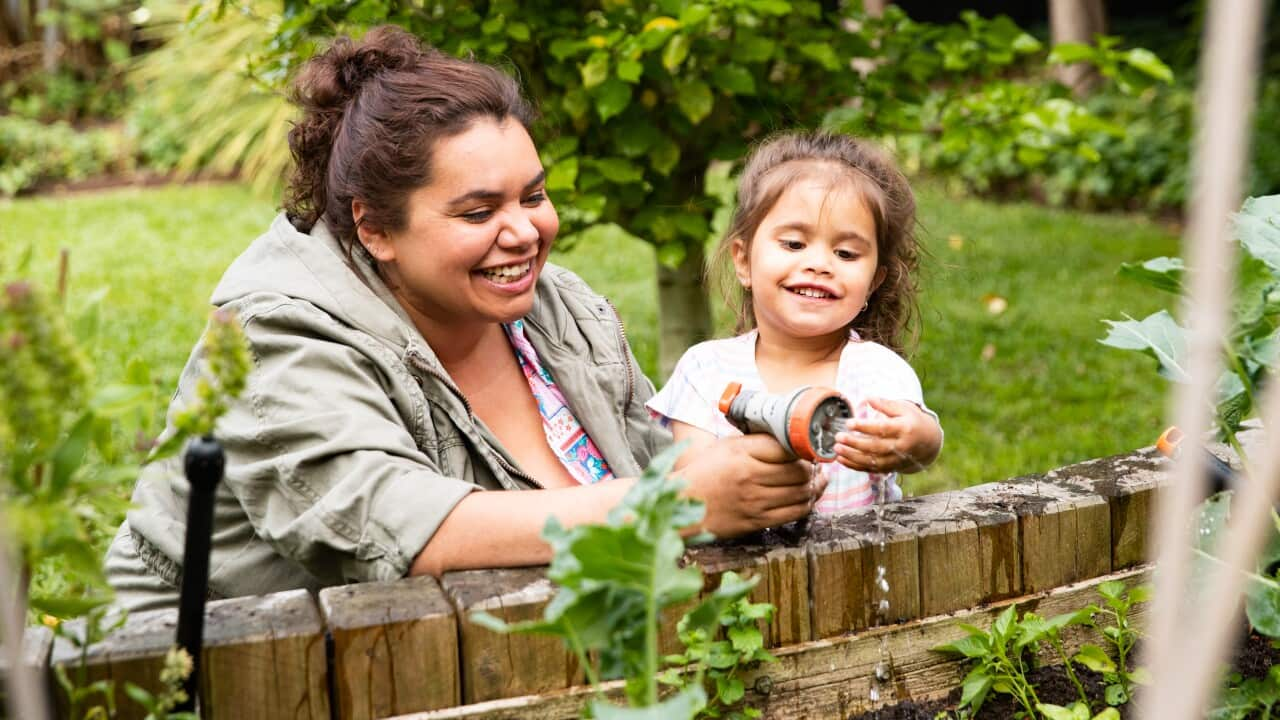Key Points
- Bushwalkers get lost every day, but smart planning can save your life.
- If lost, sit down and calm yourself before you make any poor decisions.
- Mobile reception is not guaranteed in the bush, but emergency beacons are available for hire.
- SES Bush Search and Rescue volunteers will help you in an emergency.
Around 95 per cent of people lost in the bush are found within 12 hours.
This is thanks to dedicated volunteers like Caro Ryan, Deputy Unit Commander with NSW SES Bush Search and Rescue. Ms Ryan is a passionate educator in bushwalking preparedness.
“There’s a really handy acronym to remember, and it’s Trek, T-R-E-K.”
T stands for Take what you need;
R for Register your intentions;
E for Emergency communications or emergency beacon;
K for Know your route and stick to it.

Preparedness will increase the likelihood of being found. Credit: pixdeluxe/Getty Images
Take what you need
Things to take in a small backpack include:
- Food including snacks like nuts and chocolate
- Water – one litre for every three hours
- Clothing layers in bright colours
- Hat and sunscreen
- Comfortable shoes such as joggers or hiking boots for harsher terrain
- Raincoat
- Map and compass if you know how to navigate, or download a navigation app onto your phone
- First aid kit
“And one of the best things to take along with you is some friends,” says Ms Ryan.
Walking alone increases the risks and if you’ve got people with you, you’ve got someone to back you up.Caro Ryan, Deputy Unit Commander, NSW SES Bush Search and Rescue
A minimum group of four is ideal. This way if someone is injured, one can remain with the injured party while two seek help.

It's also vital to let other people know your plans. Credit: visualspace/Getty Images
Register your intentions
You can inform the National Parks and Wildlife Service, the police or a trusted friend.
Provide details such as your route and when you expect to return. And don’t forget to let your contact know when you’re back.
Emergency beacons
Mobile reception isn’t guaranteed in the bush, so bushwalkers often carry a Personal Locator Beacon (PLB). This allows satellites to identify your location.
“If you get into serious trouble you can set off the PLB,” says Kirsten Mayer, President of Bushwalking Australia.
The police can find you by whatever means necessary – maybe helicopter, maybe bush search.Kirsten Mayer, President of Bushwalking Australia
You can hire PLBs from outdoor stores and National Parks offices, and even police stations located near national parks.
There’s also the free . It requires phone coverage but will provide your location and allow you to call for help.
Know your route and stick to it
“This means knowing exactly where you’re going, following the signs, using a map, knowing what time you’ll be out and then not changing your course midway,” says Caro Ryan.
“Remember you’ve told someone where you’re going, so Emergency Services will know where you are to come and find you.”
Be smart and choose a bushwalk to suit you.Caro Ryan, Deputy Unit Commander, NSW SES Bush Search and Rescue
One of the most common risks people take is choosing an inappropriate trail.
“Hiking fitness is different, especially when there are lots of stairs, steep terrain and we're carrying a backpack. It's even harder in hot weather."
Misjudging our fitness is common, says Ms Ryan.
Check the and if you're new to hiking in Australia, start at grade one.

If you don’t have an emergency beacon, try your best to make yourself visible. Credit: Nicole Bordes
What if you’re really lost?
The first thing to do is sit down and calm yourself.
Have a drink of water. If you’ve brought a camp stove make some tea, suggests Ms Ryan.
“Sitting down allows you to make really clear decisions.”
“The worst thing you can do is get yourself even more lost by continuing and thinking ‘I’m sure it’s just around the corner’. That’s what we call ‘bending the map’.”
Can you recall the last time you knew where you were? Perhaps you saw a sign or a junction.
If you can retrace your steps a short distance, mark your way with objects.
And if you’re in real trouble, make yourself visible. When weather and resources permit, the SES will put helicopters in the air to locate you.

Around 95 per cent are found within 12 hours by SES Bush Search and Rescue. Credit: Raoul Wegat/Getty Images
If you’re injured or the weather is bad, find a sheltered location. Remove wet clothing and if you can, build a fire. This will aid your visibility.
Take stock of your supplies. You may need to ration your food and water supply while waiting for rescue.
Before you go bushwalking
Complete a first aid course so you can take care of yourself and those around you.
And join a bushwalking club, says Kirsten Mayer.
“You’ll have a group size to be safe in the bush. You’ll find friendly people to teach you how to read a map and compass, how to perform basic first aid and what to do when you get into trouble. What’s more, they’ll take you to amazing places that most people don’t go to.”

Joining a bushwalking group is a great idea to explore Australia's nature. Credit: andresr/Getty Images
Resources
- For bushwalking clubs and safety information across Australia visit .
- You can register your bushwalk plans with .
- Caro Ryan’s
- Caro Ryan’s – Day Hike








